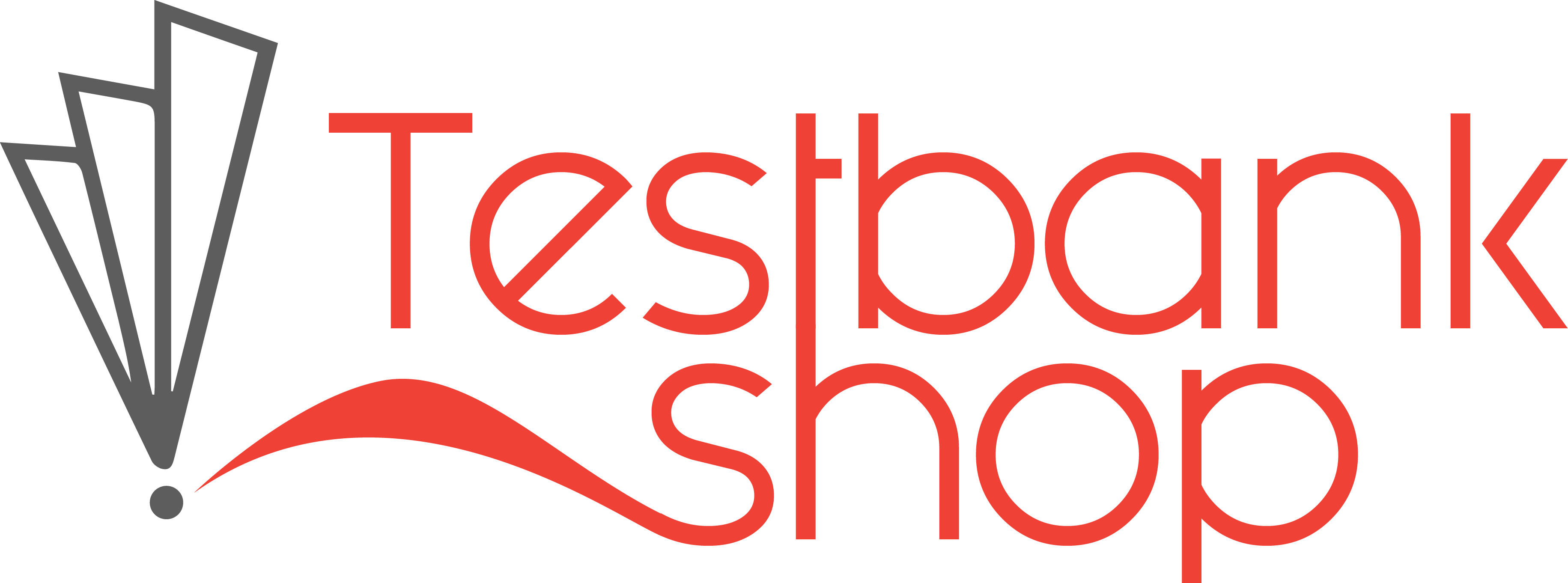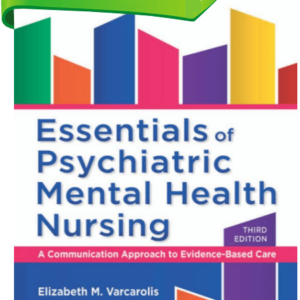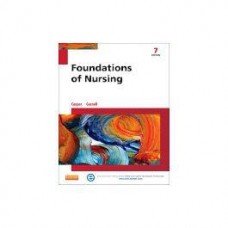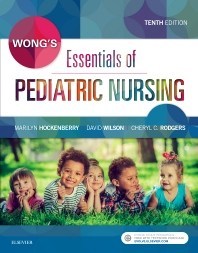Test Bank for Leadership and Nursing Care Management 6th Edition By Huber
Chapter 01: Leadership and Management Principles
MULTIPLE CHOICE
1. Leadership is best defined as:
a. an interpersonal process of participating by encouraging fellowship.
b. delegation of authority and responsibility and the coordination of activities.
c. inspiring people to accomplish goals through support and confidence building.
d. the integration of resources through planning, organizing, and directing.
ANS: C
Leadership is the process of influencing people to accomplish goals by inspiring confidence
and support among followers.
DIF: Cognitive Level: Remember (Knowledge)
TOP: Nursing Process: Assessment
MSC: Client Needs: Safe and Effective Care Environment: Management of Care
2. A medical-surgical unit reports higher rates of patient satisfaction coupled with high rates of
staff satisfaction and productivity. Which of the following is attributed to the data findings?
a. Effective leadership
b. Management involvement
c. Mentoring
d. Rewards and recognition
ANS: A
Effective leadership is important in nursing because of the impact on nurses’ work lives, it
being a stabilizing influence during change, and for nurses’ productivity and quality of care.
DIF: Cognitive Level: Apply (Application)
TOP: Nursing Process: Assessment
MSC: Client Needs: Safe and Effective Care Environment: Management of Care
3. A staff registered nurse (RN) is leading a multidisciplinary clinical pathway team in the
development of care for patients with total knee replacement. Which of the following
statements exemplifies leadership behaviors in a clinical pathway team meeting?
a. “Nursing is responsible for pain control of the total knee replacement patient.”
b. “Our pharmacist has provided some excellent pain control literature.”
c. “Physical therapy’s expertise is in rehabilitation, not pain control.”
d. “Total knee replacement patients require optimal pain control.”
ANS: B
Leadership is the process of influencing people to accomplish goals by inspiring confidence
and support among followers. The correct answer is supportive of a team member’s work and
depicts some skill at interpersonal relationships.
DIF: Cognitive Level: Apply (Application)
TOP: Nursing Process: Assessment
MSC: Client Needs: Physiological Integrity: Pharmacological and Parenteral Therapies
4. Which of the following is true of management activities?
a. Inspiring a vision is a management function.
b. Management is focused on task accomplishment.
c. Management is more focused on human relationships.
d. Management is more important than leadership.
ANS: B
Management is focused on task accomplishment.
DIF: Cognitive Level: Remember (Knowledge)
TOP: Nursing Process: Assessment
MSC: Client Needs: Safe and Effective Care Environment: Management of Care
5. During a staff meeting, a group of RNs has complained that medications are not arriving to
the unit in a timely manner. The nurse manager suggests that the group resolve this issue
through the development and work of a multidisciplinary team led by one of these RNs. This
scenario demonstrates:
a. adaptation.
b. empowerment.
c. flexibility.
d. relationship management.
ANS: B
Empowerment is the giving of authority, responsibility, and the freedom to act. In this
situation, the manager has given authority, responsibility, and the freedom to act in the
investigation and resolution of this issue.
DIF: Cognitive Level: Apply (Application)
TOP: Nursing Process: Assessment
MSC: Client Needs: Safe and Effective Care Environment: Management of Care
6. A nurse is caring for an elderly patient who was admitted after sustaining a fall at home.
When creating a care plan for the patient, she requests that the doctor order a home health visit
to assess for home safety and medication compliance. In addition, the nurse is concerned
about the nutrition of the patient and requests a dietitian evaluation. The nurse is
demonstrating which of the following leadership skills?
a. Care provider
b. Business principles
c. Care coordination
d. Change management
ANS: C
Care coordination is the delivery of nursing services that involves the organization and
coordination of complex activities. The nurse uses managerial and leadership skills to
facilitate delivery of quality care.
DIF: Cognitive Level: Apply (Application) TOP: Nursing Process: Planning
MSC: Client Needs: Physiological Integrity: Reduction of Risk Potential
7. Interpersonal communication and the ability to apply _____ are two critical skills every nurse
needs to enhance professional practice.
a. vision
b. supervision
c. delegation
d. problem solving
ANS: D
Every nurse needs two critical skills to enhance professional practice. One is a skill at
interpersonal relationships. This is fundamental to leadership and the work of nursing. The
second skill is applying the problem-solving process. This involves critical thinking, problem
identification, and the development of objectivity.
DIF: Cognitive Level: Remember (Knowledge)
TOP: Nursing Process: Assessment
MSC: Client Needs: Safe and Effective Care Environment: Management of Care
8. Good leaders need to be able to demonstrate an intuitive skill of empathy and expressiveness
when dealing with others in the workplace. This requires sensitivity and awareness of the
emotions and moods of others and is known as:
a. social awareness.
b. self-awareness.
c. self-management.
d. relationship management.
ANS: A
Social awareness is an intuitive skill of empathy and expressiveness in being sensitive and
aware of the emotions and moods of others.
DIF: Cognitive Level: Remember (Knowledge)
TOP: Nursing Process: Assessment
MSC: Client Needs: Safe and Effective Care Environment: Management of Care
9. The personal leadership skill for nurses that consists of self-awareness, discipline, motivation,
social awareness, and relationship management is known as what?
a. Leadership.
b. Management.
c. Emotional intelligence
d. Vision
ANS: C
Among the important personal leadership skills for nurses is emotional intelligence (EI). EI
traits are emotional factors consisting of five defining attributes: self-awareness,
self-regulation or discipline, motivation, social awareness, and relationship management.
DIF: Cognitive Level: Remember (Knowledge)
TOP: Nursing Process: Implementation
MSC: Client Needs: Safe and Effective Care Environment: Management of Care
10. _____ are vital to good leaders because they are able to take the vision of the leader and
achieve the determined goals.
a. Managers
b. Motivators
c. Visionaries
d. Followers
ANS: D
Without followers, there is no leadership. Followers are vital because they accept or reject the
leader and determine the leader’s personal power.
DIF: Cognitive Level: Remember (Knowledge)
TOP: Nursing Process: Assessment
MSC: Client Needs: Safe and Effective Care Environment: Management of Care
11. The best leadership style for unfavorable conditions is:
a. leader–member relations.
b. task-oriented structure.
c. position power.
d. laissez-faire.
ANS: B
The need for task-oriented leaders occurs when the situation is extreme. The best leadership
style for unfavorable conditions is task-oriented.
DIF: Cognitive Level: Remember (Knowledge)
TOP: Nursing Process: Assessment
MSC: Client Needs: Safe and Effective Care Environment: Management of Care
12. Nursing management is defined as:
a. delegation of authority and responsibility and the coordination of tasks.
b. the integration of resources through planning, organizing, and directing.
c. the process of influencing patients to accomplish goals.
d. the coordination and integration of nursing resources by applying the management
process to accomplish nursing care and service goals and objectives.
ANS: D
The coordination and integration of nursing resources by applying the management process to
accomplish nursing care and service goals and objectives is the definition of nursing
management.
DIF: Cognitive Level: Remember (Knowledge)
TOP: Nursing Process: Assessment
MSC: Client Needs: Safe and Effective Care Environment: Management of Care
13. A nursing unit has demonstrated lower patient satisfaction scores during the last quarter. The
manager of the unit has formed a small team to set long- and short-term goals for the unit with
action plans to increase patient satisfaction. This is an example of which management
process?
a. Planning
b. Organizing
c. Coordinating
d. Controlling
ANS: A
Planning is the managerial function of selecting priorities, results, and methods to achieve
results.
DIF: Cognitive Level: Apply (Application) TOP: Nursing Process: Planning
MSC: Client Needs: Safe and Effective Care Environment: Management of Care
14. A nursing unit has discovered a series of medication errors with regard to a particular
computerized physician order set and the calculation within the order. The unit manager has a
theory on changes that should be made within the order to decrease the confusion for nursing
staff. However, the nurse manager realizes that changes would need to be made with
pharmacy input as well as other nursing units within the facility and the multihospital system.
Which of the following management theories is exemplified when the nurse manager
considers the impact of change on the organization as a whole?
a. Contingency theory
b. Systems theory
c. Complexity theory
d. Chaos theory
ANS: B
Systems theory helps managers recognize their work as being embedded within a system.
Managers use this theory to learn that changing one part of a system inevitably affects the
whole system.
DIF: Cognitive Level: Apply (Application) TOP: Nursing Process: Planning
MSC: Client Needs: Physiological Integrity: Reduction of Risk Potential
15. The role of the _____ is to provide leadership and direction for all aspects of nursing services
with a focus on integrating the system and building a culture.
a. nurse manager
b. care provider
c. nurse executive
d. senior leader
ANS: C
The nurse executive’s role and functions concentrate on long-term administration of an
institution or program that delivers nursing services, focusing on integrating the system and
building a culture.
DIF: Cognitive Level: Remember (Knowledge)
TOP: Nursing Process: Assessment
MSC: Client Needs: Safe and Effective Care Environment: Management of Care
16. The postoperative patient with anterior cervical laminectomy is complaining of tightness in
his throat. His voice is raspy. The staff nurse asks the unit secretary to page Dr. Julio stat. This
is an example of _____ leadership.
a. authoritarian
b. democratic
c. laissez-faire
d. servant
ANS: A
Authoritarian leadership uses directive and controlling behaviors in which the leader
determines policies and makes decisions in isolation. The leader orders subordinates to carry
out the tasks or work. This style is helpful in crisis situations.
DIF: Cognitive Level: Apply (Application)
TOP: Nursing Process: Implementation
MSC: Client Needs: Physiological Integrity: Physiological Adaptation
17. A quality improvement team is working to enhance teamwork among the staff in a newly developed Alzheimer’s program. Which of the following statements would be an expected
behavior that illustrates quantum leadership?
a. “After the meeting today, each member on this team will be a role model of good
communication techniques to other staff members.”
b. “How would you describe an ideal collaborative practice environment?”
c. “What do you think about sharing our opinions today in a mutually respectful
manner as we move around the table?”
d. “You folks are highly motivated and smart enough to develop a plan on your own.
I’ll support you as needed.”
ANS: B
Quantum leadership fosters an environment of curiosity, questioning, and exploration. Answer
A depicts an authoritarian leadership style.
DIF: Cognitive Level: Apply (Application) TOP: Nursing Process: Evaluation
MSC: Client Needs: Safe and Effective Care Environment: Management of Care
18. A nursing executive is leading a multidisciplinary team of professionals who have worked
well together on prior initiatives. Which of the following leadership styles might work best in
this situation?
a. Authoritarian
b. Democratic
c. Transformational
d. Transactional
ANS: B
Democratic leadership would work best in this situation. This approach implies a relationship
and person orientation and policies are a matter of group discussion and decision.
DIF: Cognitive Level: Apply (Application) TOP: Nursing Process: Planning
MSC: Client Needs: Safe and Effective Care Environment: Management of Care
19. Which of the following are crucial leadership traits to exhibit in the nursing profession?
a. The nurse leader needs to by dynamic
b. The nurse leader shows good interpersonal skills
c. The nurse leader is a visionary for the organization and the profession
d. The nurse leader is able to inspire
e. The nurse leader allows corporate executives to determine department goals
ANS: A
Leadership is considered key to the success of health care organizations. A nurse leader needs
to be dynamic, show interpersonal skills, and be a visionary for the organization and the
profession. The ability to inspire and motivate followers to carry out the vision is crucial.
Effective nurse leaders set department goals without micromanaging.
DIF: Cognitive Level: Remember (Knowledge)
TOP: Nursing Process: Assessment
MSC: Client Needs: Safe and Effective Care Environment: Management of Care




